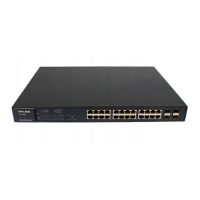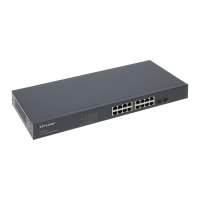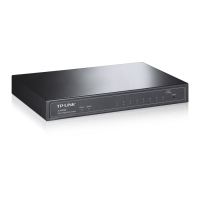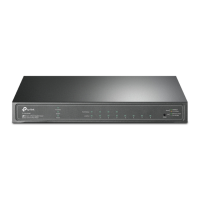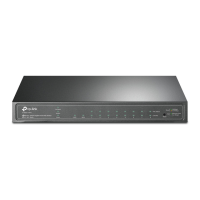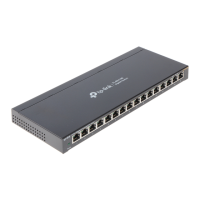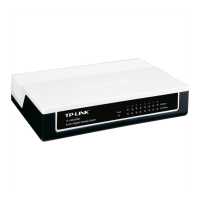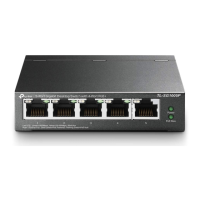Configuring Spanning Tree MSTP Configurations
User Guide 317
Follow these steps to configure parameters on ports in CIST:
1) In the Port Config section, configure the parameters on ports.
UNIT Select the desired unit or LAGs.
Status Enable or disable spanning tree function on the desired port.
Priority Specify the Priority for the desired port. The value should be an integral
multiple of 16, ranging from 0 to 240.
The port with lower value has the higher priority. When the root path of the
port is the same as other ports’, the switch will compare the port priorities
between these port and select a root port with the highest priority.
Ext-Path Cost Enter the value of the external path cost. The default setting is Auto, which
means the port calculates the external path cost automatically according to
the port’s link speed.
For STP/RSTP, external path cost indicates the path cost of the port in
spanning tree. The port with the lowest root path cost will be elected as the
root port of the switch.
For MSTP, external path cost indicates the path cost of the port in CST.
Int-Path Cost Enter the value of the internal path cost. The valid values are from 0 to
2000000. The default setting is Auto, which means the port calculates the
internal path cost automatically according to the port’s link speed. This
parameter is only used in MSTP and you need not to configure it if the
spanning tree mode is STP/RSTP.
For MSTP, internal path cost is used to calculate the path cost in IST. The
port with the lowest root path cost will be elected as the root port of the
switch in IST.
Edge Port Select Enable to set the port as an edge port.
When the topology is changed, the edge port can transit its state from
blocking to forwarding directly. For the quick generation of the spanning tree,
it is recommended to set the ports that are connected to the end devices as
edge ports.

